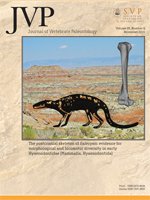Endocranial casts are the only available material to study the evolution of brain morphology through geologic time. However, these are not just casts of brain tissues but also include, e.g., meningeal tissues, blood vessels, and nerves. Tissues surrounding the brain are particularly thick in proboscideans, making the estimation of brain size in extinct proboscideans very tentative. Here the regression of brain mass over cranial capacity—based on data on intraindividual comparison between those two metrics in the literature—is used to estimate the ‘true’ brain mass of extinct mammals. This regression reveals that cranial capacity is allometrically related to brain mass in mammals. The larger the brain, the greater is the difference between brain mass and cranial capacity. Applied to proboscideans, this new method suggests that the thickness of non-neural tissues surrounding the brain has been greatly overestimated in extinct proboscidean species, resulting in the underestimation of brain mass. This data set suggests that a comparatively small brain is likely primitive for Proboscidea and that the representatives of the clade Elephantimorpha have inherited their large brain from their last common ancestor. The largest brain proportional to mass of all Proboscidea belongs to the Quaternary dwarf elephant of Sicily, which would have been comparable to modern humans in encephalization quotient.
How to translate text using browser tools
1 November 2015
A New Method of Estimating Brain Mass Through Cranial Capacity in Extinct Proboscideans to Account for the Non-Neural Tissues Surrounding Their Brain
Julien Benoit
ACCESS THE FULL ARTICLE





